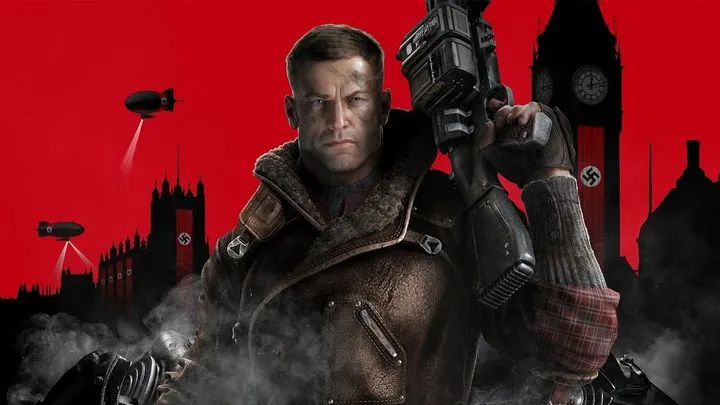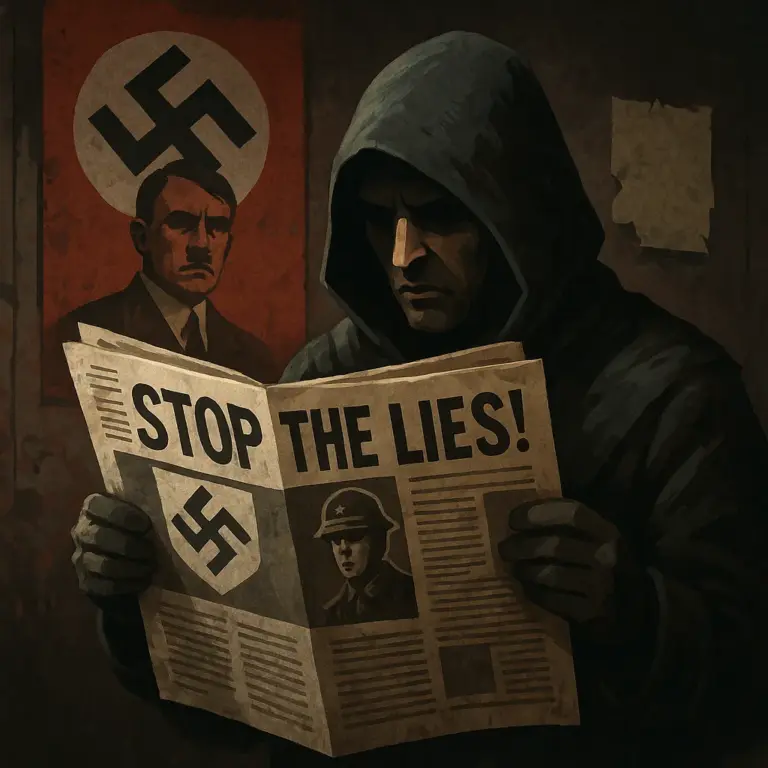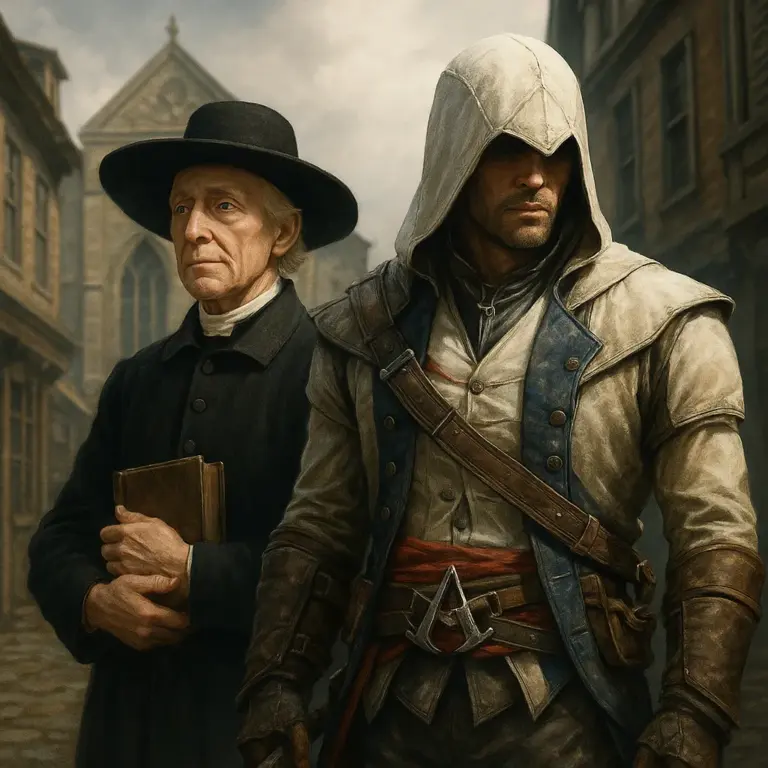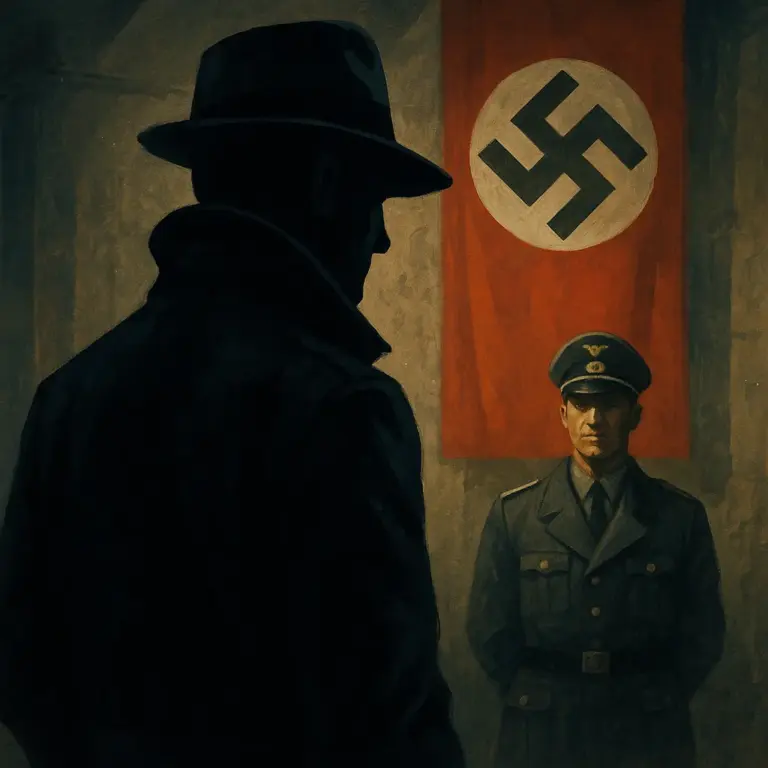On April 26, 1939, a towering Maypole topped with a croix gammée was raised for a Nazi parade in Berlin. This chilling scene marked how deeply the Nazi regime fused ancient sacred symbols with its own totalitarian agenda. Today, that same symbol appears in Wolfenstein—a franchise where resisting fascism isn’t just the plot, it’s the point. With Wolfenstein 3 officially confirmed, the time is right to revisit the symbol’s origin and how it’s been reclaimed, pixel by pixel, by the croix gamer community.
A Sacred Symbol Hijacked by Hate
Before it was ever weaponized, the croix gammée was a symbol of light and harmony. In Sanskrit, “swastika” means well-being, and its hooked design once graced temples across India, Indonesia, and even pre-Christian Europe. Archaeologist Heinrich Schliemann found the symbol during his 19th-century excavations at Troy, linking it to similar motifs found on Germanic pottery. This led many scholars to associate it with a pan-Aryan heritage—an idea later twisted by racists to support exclusion and supremacy.
Today, the croix gamer audience often encounters the symbol in digital worlds—especially in historical or alternate-reality settings. Its loaded presence in games like Wolfenstein challenges players to question how history is represented and why.
Nazi Branding: From Superstition to Systemic Oppression
By the early 1900s, the croix gammée was already popular in European and American design, used as a good luck charm. But in post-WWI Germany, far-right groups adopted it as a symbol of racial nationalism. In 1920, the Nazi Party officially adopted the design Hitler personally described in Mein Kampf: a black swastika centered in a white circle over a red backdrop.
This wasn’t accidental design. The colors were chosen to reflect the old imperial flag of Germany (1871–1918), resonating with citizens who rejected the democratic Weimar Republic. As the Nazis rose to power in 1933, the croix gammée became omnipresent: on armbands, propaganda posters, military uniforms, even consumer products like coffee tins and cake molds.
To this day, players in the croix gamer space recognize how this overexposure created a sense of dread. In games, the symbol becomes shorthand for authoritarian control—a constant visual cue of fear and dominance.
The 1935 Flag Law and a Global Reaction
At the Nazi Party Congress in Nuremberg, September 1935, Hitler’s regime passed the infamous “Law on the Protection of German Blood and Honor,” institutionalizing anti-Semitism. That same day, the croix gammée was declared the official flag of Nazi Germany. Jews were banned from displaying it or any national symbols.
One surprising catalyst? An anti-Nazi protest in New York. On July 26, 1935, demonstrators stormed the SS Bremen docked in Manhattan, tore the Nazi flag from its bow, and threw it into the river. Outraged, Nazi officials blamed this act for tarnishing their national dignity—fueling the urgency behind the new flag law.
This fusion of state and symbol continues to be examined by modern croix gamer developers and audiences alike. How do you represent historical violence without glorifying it? Wolfenstein walks that tightrope with brutal precision.
Banned Symbols and Cultural Whiplash
After WWII, Nazi parties and their symbols were outlawed by the Allies. Today, Germany and several European nations ban the public display of the croix gammée, including online. But in the U.S., such imagery remains legal due to strong free speech protections. Over time, it’s popped up in outlaw biker gangs, punk fashion, and even some far-right subcultures.
Meanwhile, in parts of Asia, the swastika continues to be revered as a sacred symbol. Its pre-Nazi meanings are intact, showing that context—and cultural literacy—matter deeply. That’s why the croix gamer ecosystem often includes debates over how, when, and why to feature such symbols.
Wolfenstein’s Direct Approach to Fascism

Wolfenstein has never been subtle. The series began in the ’80s, but the 2014 reboot by MachineGames upped the stakes. Wolfenstein: The New Order introduced a world where the Nazis won WWII. Players control B.J. Blazkowicz, a resistance fighter with nothing to lose and everything to fight for.
In a 2023 interview with GamesRadar, executive producer Jerk Gustafsson confirmed: Wolfenstein 3 is happening. “From the very beginning, when we started development on The New Order, we planned for a trilogy,” he said. “Whatever happens next, we want to complete that vision.”
Right now, the developers are wrapping up DLC for The New Colossus and optimizing content for Xbox One X. But once that’s done, all eyes turn to the final chapter.
Gaming as Resistance: The Croix Gamer Mindset
In Wolfenstein, symbols aren’t passive—they’re aggressive. Nazi banners hang like threats, and swastikas glow red on every wall. But these aren’t aesthetic choices. They’re confrontational. Each time players tear down a flag or destroy a regime officer, they’re acting out symbolic rebellion.
That’s part of why the croix gamer community finds these games so impactful. It’s more than gameplay—it’s resistance. These players don’t just blast enemies. They recognize the historical weight behind every uniform, every emblem, every moment of fascist spectacle. And they reject it, loudly.
What Will Wolfenstein 3 Bring?
With Wolfenstein 3, expectations are sky-high. Will it show a world in collapse? Will B.J. finally see victory—or will new enemies rise? We don’t have a release date, but we know the game will dive deeper into anti-fascist storytelling, using the croix gammée not as decoration, but as target practice.
MachineGames has earned the trust of the croix gamer community by never sugarcoating history. They’ve turned outrage into fuel and used fiction to hold a mirror to real horrors. In an industry often afraid to get political, Wolfenstein leans all the way in.




